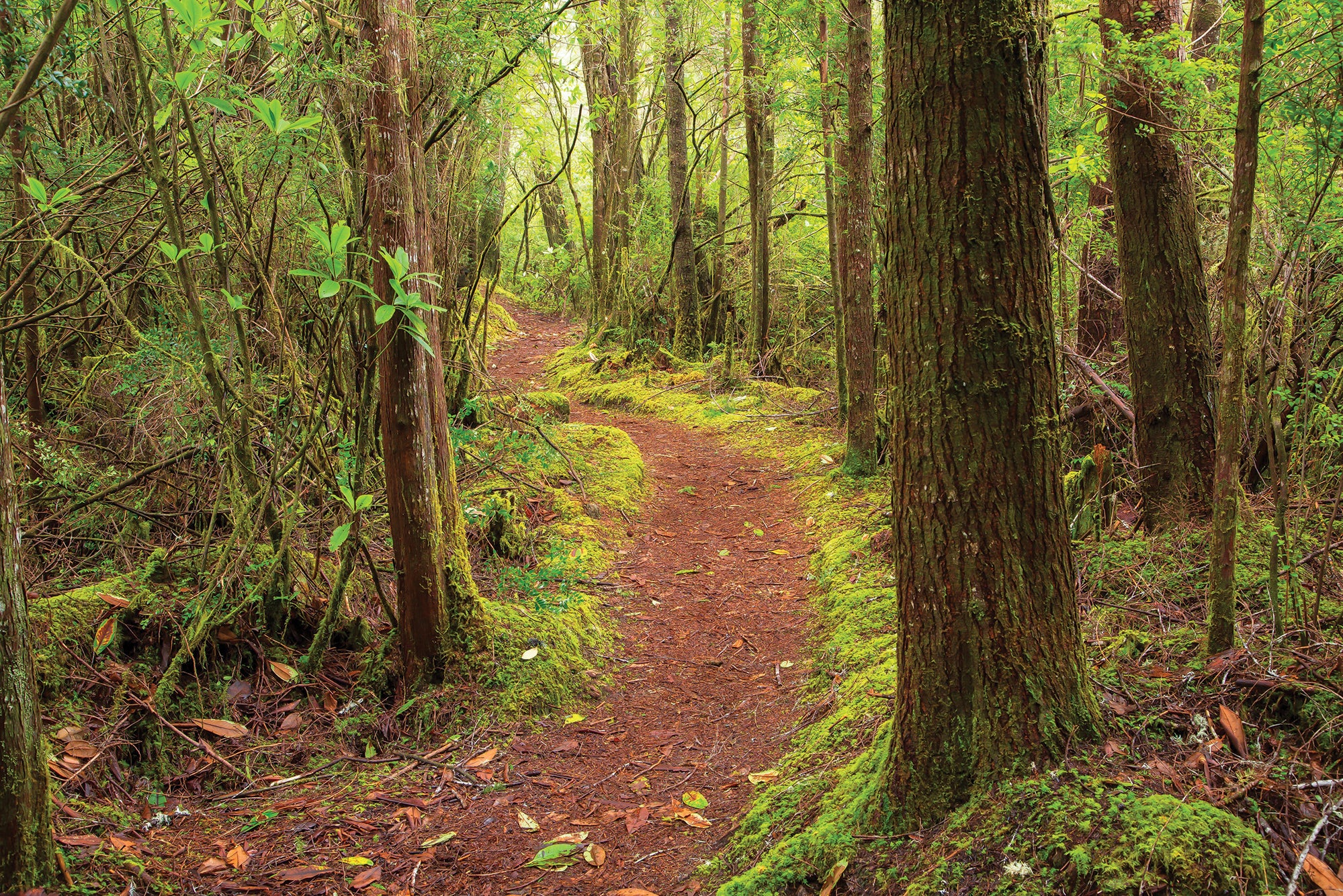Go on a Coastal Getaway in the Siuslaw National Forest, Oregon

'George Ostertag / Alamy Photo Stock'
I really don’t want to step on a salamander, but they’re making it difficult. A typical November morning drizzle has brought the forest to life as I weave through a sea of massive, moss-covered logs and evergreen salal shrubs. I’ve barely started the hike before I have to dodge a rust-colored rough-skinned newt and then a giant coastal salamander the size of a small squirrel. Waist-high sword ferns line the path, and hundred-foot-tall Sitka spruce block out the sun. But I’m not in the forest for long. Less than a mile into the hike, I emerge from the shade into a world of sun and sand, conifers giving way to wind-sculpted dunes. Gulls chatter overhead, and the scent of saltwater drifts over the trail. I’m eager to see how the beach has changed since my last summer visit, shifted by winter storms that battered the coast and sliced a new route for the creek. Just one more excuse to keep coming back.
Turn by Turn From the Tahkenitch Dunes Trailhead
1) Take Tahkenitch Dunes Trail (#1353) through a spruce-fir forest that is home to the Pacific marten. Turn right to stay on Tahkenitch Dunes Trail when you reach the first intersection at mile .3.
2) The trail passes from forest to sun-soaked sand dunes before reaching another junction at mile 1.3. Turn south onto Tahkenitch Creek Trail (#1336).
3) At mile 1.5, take a right and hike through a grove of gnarled shore pines to a beach at mile 2.2, a summer home for shorebirds like the threatened snowy plover. Return to the main trail and continue through the deflation plain—the shallow depression immediately behind the coastal dunes—which hosts seasonal ponds and spring-blooming huckleberry.
4) Turn left when you hit Threemile Lake Trail (#1338) at mile 4.2. To the right, a spur trail goes .3 mile to a sandy beach—a great spot to return to after setting up camp. Keep an eye out for some of the 20,000 gray whales that migrate northward up this coast between December and May.
5) Reach your campsite (details below) at mile 4.4, atop a forested dune overlooking the sandy beach and the Pacific beyond.
6) The next day, continue along the trail as it skirts the north shore of tranquil Threemile Lake, home to muskrats and great blue herons wading in the shallows.
7) Climb 400 vertical feet up a forested ridge to the sound of distant breaking waves. Glance west for the occasional glimpse of the ocean through the trees (then back to the ground to avoid smooshing a salamander).
8) At the junction at mile 6.6, stay right to return to the trailhead.
Campsite (Mile 4.4)
You won’t need any convincing to stick around for the night when you crest the dune at mile 4.4. Pitch your tent among the trees about a hundred feet off the trail to shelter it from ocean winds, but don’t worry—there’s plenty of open vantages nearby to grab sunset views of the surf. For fresh water, hike .1 mile east downhill to Threemile Lake. For saltwater, take the trail right from camp .5 mile west to the beach. There’s no infrastructure (toilets or fire rings), and the campsites are informal worn areas scattered within 500 feet of the trail. The six or so sites rarely fill up even on busy weekends.
Salamander Smorgasbord
Almost a dozen different species of salamanders call the Oregon coast home. They range in size from 2 inches to, in the case of the aptly-named Pacific giant salamander, over a foot long. They have external gills when young but lose them as adults, and usually roam the forest floor after rainstorms. Fully terrestrial salamanders, like the rough-skinned newt, breathe through their skin instead of gills. All species of salamander have poison in their skin, so look but don’t touch.
Do It
Trailhead Tahkenitch Dunes (43.7958, -124.1492) Road Conditions 2WD accessible year-round Season Year-round, though winter is best for solitude Permit None required; $5/day parking fee